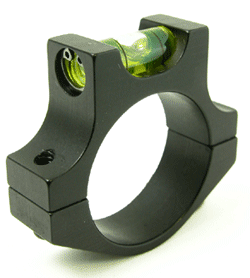Re: Tricks to mount optic perfectly horizontal?
I may be missing something here, (likely), but I use a Bushnell collimator to line up crosshairs.
I have a lot of machinist tools, but haven't worried about the level of my base or scope. I generally install base and torque the mounting screws to 15 inch lbs, and then install the bottom ring half, torqued to 65 in lbs.
Putting the scope which has been returned to median points into the rings and lightly tightening the top ring half, I tighten the outer screws and then the inners; paying attention to keeping the crosshair dead-on with the collimator.
It does not take much unbalanced pressure to move the reticle off the collimator grid.
Admittedly, I am not using a custom ground spud to center the collimator, this maybe puts me off, but... Compared to how easy it is to over tighten one screw and shift the whole reticle, I think keeping the reticle perfectly centered on the collimator grid is critical.
A collimator can be used for many other purposes besides mounting scopes; checking the movement tracking, or keeping track of zero positioning when the scope is mounted on another rifle, or remounted on the original rifle.
If you really want an awakening; try testing the slot widths on your scope base with a gage block. Even on the best/most expensive mount, some will be off. Then take an 8" caliper and measure the distances from each slot on each side; slot by slot.
I have never epoxy bedded a scope base, but that is one way of really "being sure". When you get into shimming a base or ring, I think you wind up negating some other factors that you want working for you, like the fit of the base to the receiver contour. Shims will work, but they are not an elegant solution.
Something else you may be overlooking, the forward most base screw can, if left too long, impact your barrel threads and have detrimental effect on your shooting equation. So, be sure your base's forward mount screw doesn't impact your barrel.
I am sure the plumb-bob idea is a good one, I use the collimator to track the movement in all directions. If anything is off, it is readily apparent.
I have not tested/measured the other variables in my scope mount setup. I am sure if there is slop in the slot spacing and width, there must be variances in the height of the base and then in the corresponding surfaces of the scope rings. Who knows? Maybe we need to lap/grind all mating surfaces to be sure? If I was shooting benchrest, I might look into this further.
In the real world, receivers are not perfectly round, base mount holes are not perfect because of variances, and holes might not even be in-line. Many rifles that aren't "perfect" will shoot with those that are.
If I wasn't into switchbarreling, I think I would bed my scope bases. A collimator really makes setting your scope up a snap.










